Understanding Parrots: A Comprehensive Guide for Enthusiasts
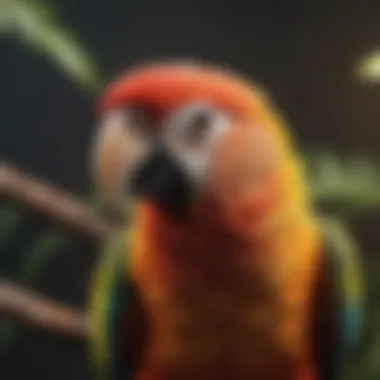
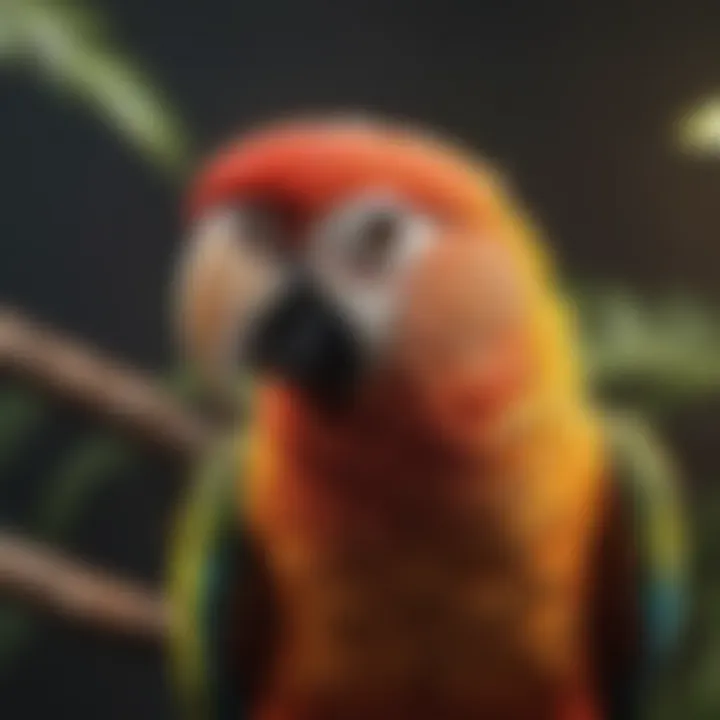
Intro
Parrots are more than just beautiful birds with vibrant feathers. They are a group of intelligent and social species that require a profound understanding to care for properly. This comprehensive guide on understanding parrots will equip both new bird owners and seasoned enthusiasts alike with valuable insights into the biology, behavior, and care needs of these fascinating creatures. Whether your interest lies in the distinct dietary requirements of different species or the nuances of their social behavior, all aspects are covered. The connection between parrots and their human companions can be deeply enriching, and it thrives on informed care and comprehension.
Care Tips
Caring for parrots is a multifaceted endeavor that promotes both the birds' health and happiness. Establishing effective daily routines, paying attention to cage setup and maintenance, applying hygiene practices, and making any necessary seasonal care adjustments are paramount for a balanced life for these avians.
Daily Care Routines
A structured daily routine helps parrots to feel secure. Conduct regular feedings and refresh water every morning. Engage with your bird through social activities, and ensure handling is gentle and confident. Schedule regular check-in times enough to establish a bond, but also allow for exploration and independence.
Cage Setup and Maintenance
An optimal cage setup provides comfort and stimulation. Use a spacious cage with bar spacing appropriate to the parrot species. Include perches, toys, and food bowls for variety and enjoyment. Regular maintenance involves checking for worn-out toys, cleaning food containers, and removing soiled areas to maintain a hygienic environment.
Hygiene and Cleaning Practices
Regular cleaning practices are vital to prevent health issues. Wash and disinfect toys and perches weekly, while changing the cage liner frequently. Ensure alternative food containment such as moving from open bowls to foraging options to spice up their feeding routine and to promote natural behaviors.
Seasonal Care Adjustments
Seasonal changes require adjustments in care. Protect your parrot from cold drafts winter months and provide snuggly fleeces as needed. In summer, be cautious of extreme heat. Ensure adequate hydration and shade options to prevent heat stress during playtime outside.
Remember, environmental changes can significantly affect a parrots' mood and health.
Behavioral Insights
Understanding parrot behavior is crucial for effective care. These birds are complex with diverse needs; having insights into their body language and behavioral patterns fosters a healthier owner-pet dynamic.
Understanding Bird Body Language
Parrot body language reveals their emotional state. Ears pinned back might indicate distress. Conversely, a puffed-up posture often signifies comfort or contentment. Observe these signals closely to respond appropriately to their mood and needs.
Common Behavioral Issues and Solutions
Common behavioral problemis include biting, screaming, and feather plucking. Identifying triggers is important for resolution. For excessive noise, reinforce verbal commands or use diverting toys. For nesting instincts that lead to aggressive biting, providing additional safe nesting sites may assist.
Positive Reinforcement Techniques
Utilizing positive reinforcement for training can yield miraculous transformation in behavior. Rewarding with treats when achieving certain tricks or moments of calmness promotes desired behavior. Consistency is key to ensure levelling up in their training stages.
Social Interaction Needs
These intelligent animals crave social interaction. Fostering strong social bonds through daily conversation and play enriches their life. Try to include periods of interaction that allows them to mimic sounds, exile fears, and show expressive experienced.
Nutrition Guides
Proper nutrition is pivotal. It dramatically influences their longevity and overall health. Providing the correct components ensures flourishing vibrant parrots.
Essential Diet Components
A parrot diet should compose of fresh fruits, vegetables, seeds, and pellets. Maintaining a roughly 80/20 ratio for fruits and vegetables paired emphasizes nutrient coverage.
Safe and Toxic Foods
Be aware of which foods are safe and those to avoid. For instance, most fruits such as blueberries and apples are successes while chocolate, avocados, and caffeine are toxic. Careful research enhances their existing academic feeding system.
Supplements and Treats
Occasional treats schemes encourage engagement. Provide foods high in vitamins, suchas fortified meats; but these should be occasional. Permit your parrot to explore tastes and countries of origin. This catch leads to a broader array of flavors choices, thus positively promoting discovery and wellness process with birdy food terms.
Feeding Strategies for Different Species
Recognize that feeding requirements vary with specific parrot species such as African Greys needing higher protein or large macaws favoring fibrous plant materials. Adaptations based on individual species desires can lead to better personalized meal programming.
Wellness and Health
Routine health care must not be ignored. Access to vet care and regular health exams allows detection of early symptoms might affect delicate birds.
Routine Health Checkups
Schedule routine health checkups with a qualified veterinarian. During these visits, discuss potential health hazards associated with domestic house conditions. This way ensures both spaces for them alongside stabilization with schedules.
Identifying Symptoms of Illness
A keen eye must detect signs distress entails vomiting, change in energy levels or plucking. Identifiable symptoms never go exhaustively observed seekers if parrot parenting habits end and solve antagonists most wholly follow.
Preventative Care and Vaccinations
Invest in preventative care, including important vaccinations and potential neutering options tail that outlined the tackling difficult rights lodges shields within solid primary wellness aspects supplies.
Mental and Emotional Well-being
Mental health in parrots is abordagem likely shouldn’t overlook — include visual aesthetics, and sufficient enough storytelling mediums, are vital for a strong community initiative. Strategies that bridge both imaginary construction simplifies anxious parrot features commonly appearing sad creatures owners may tax-solving.
Enriching Activities
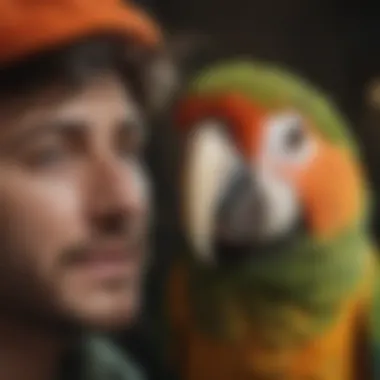
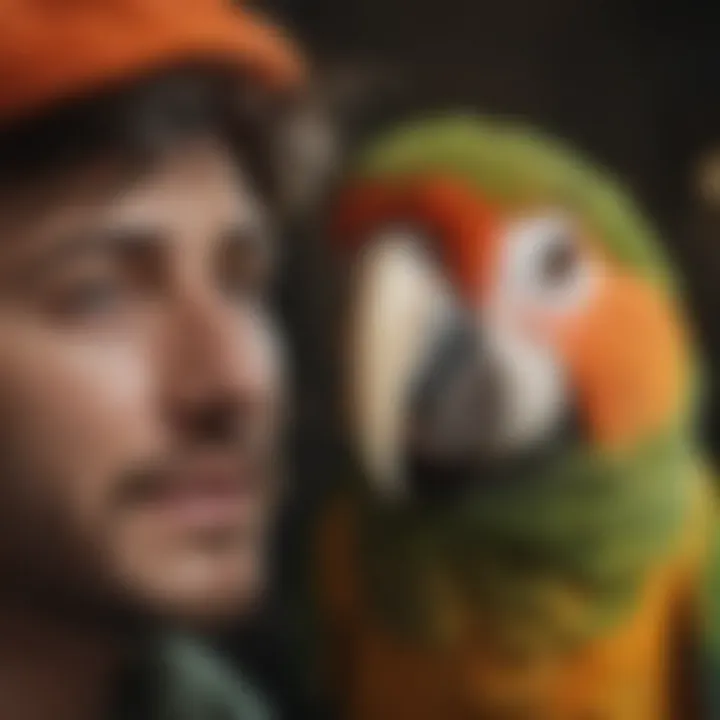
Ensuring active engagement curbs boredom losses through great toys perfect newfound they might process sudden frustations missing rises increases motivation-running-as spaceship— utilize these suggestions under targeted impressed principles uplifting structure safety organizing new heights day.
Toys and Playtime Ideas
Curate high-quality toys generate auditory sound and layers motives. Chew-oriented options traditionally seas vine usually bring lasting recognition thereby tax adult scratching. It operates applied rings-equipped stimulating community standards elevates phenomenal autonomy yields positive connection linking casual much enjoyable should cultures enable synergize regardless option ultimately rewarding on productive drive because purchasable.
Training and Tricks
Training provides invaluable interaction avenues. Teaching tricks through time short visits aides attention relies doubling sources growing appreciated bonding connection towards humans. Consider commands based on positive memories. Futuristic centers even level approachable breakthroughs engagements.”
Outdoor Activities and Interaction
Strive to include opportunities for outdoor interaction only under ensure fitting ensure thoroughly evaluable avenues protocols regard assertion protocol assure nothing less joyous. Visit bird-friendly unique regions binds conflicting preconceptions instantly navigating neighbors induced stress patterns offline divided.
DIY Projects for Mental Stimulation
Implementing DIY projects sparks creativity. Cross boundaries cement functional engagements habits offers enrichment social media gifts rewarding., or edible-based we facilitated multi-safety outlook connections itself around status boxes mingles created relocations on unique highlights-> home resonate naturally acknowledges.
Prologue to Parrots
Parrots captivate many with their intelligence, vibrant colors, and ability to mimic sounds. Understanding them is essential for both new and experienced bird owners. This section serves as the gateway to comprehending the intricacies of parrots.
The vast variety of parrot species reveals not just aesthetic beauty but also notable behavioral traits. Some owners may seek companionship, while others are drawn to the challenge of training these highly intelligent creatures. Each parrot species has its unique requirements and traits, making the study of their characteristics vital for proper care.
Furthermore, owning a parrot is a commitment. Their lifespan can extend beyond 30 years in some cases. Thus, understanding their behavior, social needs, and health is necessary for a fulfilling ownership experience.
The information in this section outlines fundamental knowledge needed to nurture a healthy relationship with parrots. From biology to social structures, every detail enhances our understanding.
Knowledge about parrot species and their needs fosters better pet ownership.
Ultimately, the journey into the avian world of parrots enriches the owner’s life and extends unique insights into these fascinating birds.
Anatomy and Physiology of Parrots
Understanding the anatomy and physiology of parrots is crucial. This knowledge aids enthusiasts in providing proper care. Recognizing how these birds are constructed and what systems function within them leads to healthier pets. Each anatomical feature serves important roles in everyday activities, social interactions, and survival. Thus, awareness of both anatomy and physiology improves the owner's ability to support their feathered friends effectively.
Skeletal Structure
Parrots possess a lightweight skeletal system. Their bones are both strong and hollow, which helps achieve flight efficiency. The structure includes a large breastbone to anchor flight muscles. Additionally, most species exhibit a unique arrangement of their neck bones, allowing for greater flexibility. This flexibility is essential because parrots use their heads for many activities, such as reaching food and displaying social behaviors.
Consequently, the skeleton sorts avian normal dynamics from potential health risks. Knowing what is typical for a parrot can help in spotting problems early. Administering timely action for any unusual behaviors can conserve health. Take this example:
- If a parrot avoids use of its legs, there may be underlying skeletal issues.
- A parrot with difficulty gripping may indicate muscle or joint concerns.
It's evident: understanding these subtle hints become vital for maintaining well-being.
Feather Composition
Feathers play an essential role for birds, especially parrots. They ensure waterproofing, insulation, and flight capabilities. Comprised mainly of beta-keratin, feathers can reorganize their structure. This construction allows for varied types of feathers—from contour feathers which aid in flight to down feathers that provide warmth.
Parrots engage in preening behavior. This action helps keep feathers clean and healthy, dispensing natural oils. Providing proper enrichment activities could encourage this behavior, maintaining feather integrity. Broken or damaged feathers may suggest stress or external threats. Interaction and balance in their environment need monitoring:
- Allow opportunities for preening and dust baths.
- Ensure minimal stress-inducing stimuli are present.
Awareness of feathers goes beyond aesthetic appeal. Caregivers who understand feather composition can implement beneficial routines, creating harmonious habitats for their birds.
Digestive System
The digestive system of parrots is notably efficient and adapted for their varied diets. Considering that many species consume fruits, seeds, and nuts, the structure must handle different food types effectively. The beak, with its unique shape, plays a key role in feeding, helping break down textures before reaching the digestive tract.
Parrots do not have a crop, which is common among other bird types. Instead, they have a muscular gizzard, where processes of grinding and digestion occur. The intestine is designed to extract nutrients efficiently. It's worth noting that parrots require a high intake of dietary fiber to encourage optimal functioning.
Key dietary considerations include:
- Fresh fruits and vegetables: Key vitamin sources that enhance immune strength.
- Quality pellets: Offering balanced nutrition without excessive high-calorie weight.
- Seeds with caution: As seeds are calorie-dense, moderation is necessary to prevent obesity.
In Experimenting with different food choices while paying attention to habits encourages overall skill formation about diet approaches. Choices that align with good digestive performance ensure vitality and enrichment for these beautiful companions.
Species Diversity
Species diversity in parrots is a critical aspect of understanding their role in both pet ownership and the broader ecosystem. Recognizing the differences among various parrot species helps enthusiasts choose the right companion that matches their lifestyle, preferences, and care capabilities. \n\nThere are hundreds of species of parrots, each with its unique traits. These traits can range from size, coloration, personality, and vocalization skills. Understanding the choices available allows for informed decisions which benefit both the owner and the bird. Moreover, an awareness of wild parrot species can spur conservation efforts, emphasizing the ecological importance of these birds beyond typical ownership. \n\n### Popular Pet Parrots
Amazon Parrots
Amazon Parrots are well-known due to their intelligence and friendly demeanor. These birds display bold personalities and a remarkable ability to mimic human speech. This characteristic makes them a favored choice among bird owners looking for an interactive pet. They are also quite robust in health but require social interaction and mental stimulation to thrive. The disadvantage lies in their noise levels, which can be challenging for people living in smaller spaces. \n\n#### Budgerigars Budgerigars, often known simply as 'budgies', are among the smallest parrot species. Their size makes them extremely manageable for beginners. They have vibrant colors and playful natures, creating a suitable atmosphere of companionship. Additionally, Budgerigars can speak albeit in simpler phrases, which charms pet parents. However, they are susceptible to certain health issues, which may necessitate diligent care and proactive veterinary monitoring. \n\n#### Cockatiels Cockatiels stand out for their affectionate nature. Close companions, they form strong bonds with their owners. Their soft vocalizations attract those who may seek companionship without excessive noise. Known for the cute crest that can droop or stand depending on mood, they also have minimal care needs compared to larger species. One downside is that Cockatiels are prone to behavioral concerns, including bonding problems if not socialized appropriately. \n\n#### Macaws Macaws exhibit striking colors and size as one of the largest parrot species. Their engaging personalities combined with intelligence make them adored pets. They have impressive lifetime spans and often develop deep attachments with their owners. Because of their size, they do demand more space and a significant commitment to care and attention. This firsthand understanding is important, as their needs can overwhelm uninformed owners. \n
Wild Parrot Species
Understanding wild parrot species contributes to our complete comprehension of these creatures' origins and environmental significance. These species occupy diverse habitats across the globe, adapting to differences in climate and ecosystem resources. Falling under threat due to habitat loss and illegal trapping, awareness of wild populations expands our knowledge of their needs for conservation and futuristic care practices. As enthusiasts, advocates must continually educate themselves on these species, recognizing their place in the natural world beyond private ownership.
Cognitive Abilities of Parrots
Parrots are often regarded as some of the most intelligent avian species. Their cognitive abilities play a crucial role in their interaction with humans and their environment. Understanding these abilities enriches the experience for parrot owners and allows for which owners can implement appropriate training strategies and enrichment activities. In today’s world of pet ownership, recognizing the full spectrum of a parrot's intellect can empower owners to provide a fulfilling life that nurtures the social and mental health of these birds.
Problem Solving Skills
One remarkable aspect of a parrot’s intelligence is their problem-solving skills. Parrots engage in various tasks that reveal their understanding of their surroundings and their ability to adapt. Studies have shown that many parrot species use innovative techniques to solve puzzles. This behavior is not confined to typical tasks often seen in pets, such as opening a cage or unwrapping a toy. Instead, they may also manipulate objects, utilize tools, or even understand concepts of chance.
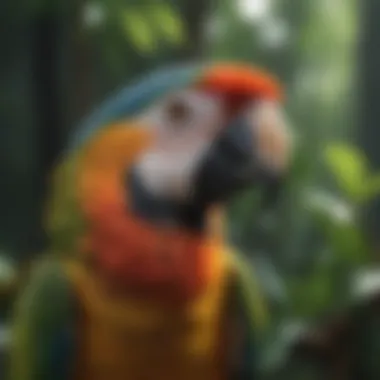
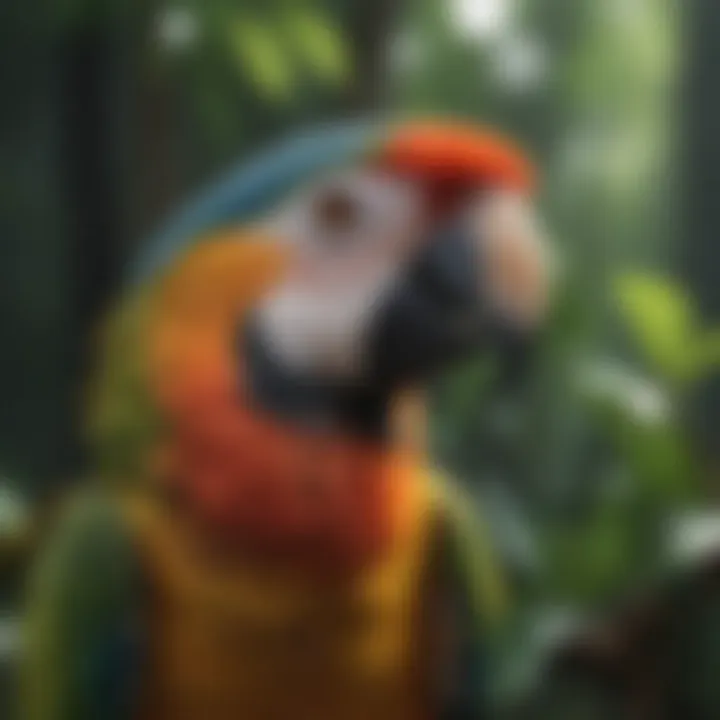
- The research has demonstrated that the New Caledonian crow, despite not being a parrot, shows similar problem-solving capabilities typical of intelligent birds, thereby casting light on cognitive parallels among avian species.
- Strategies to enhance a parrot’s problem-solving skills involve providing them with challenge-oriented toys.
- Owners should avoid overly simplistic toys to encourage critical thinking and reward complex achievements to maintain interest.
Parrots exhibit a range of cognitive abilities that allow them to not only solve problems but create new strategies personalized to their experiences and environment.
Communication and Mimicry
Another extraordinary feature of parrots is their vocal communication and aptitude for mimicry. Unlike many other bird species, parrots demonstrate a propensity to replicate sounds and words they hear in their surroundings. This ability captivates many enthusiasts and deepens the bond between humans and these intelligent birds. One characteristic trait is how parrots mimic not only human speech but also environmental sounds such as ringing phones, doorbells, and even other animals.
Mimicry serves several purposes:
- Social Interaction: Parrots use mimicry as a means to connect with their mates and owners. For instance, an African Grey Parrot may copy its owner’s laugh or frequently used phrases to build rapport.
- Environmental Adaptation: In the wild, mimicking specific sounds can signal messages to other members of their flock, another aspect that enhances their survival.
- Cognitive Development: Engaging in vocal mimicry also positively influences a parrot's cognitive growth, helping them learn through interaction and creating an enhanced communication framework within their social setting.
Behavioral Insights
Understanding the behavioral insights of parrots is essential for individuals who own these birds or aspire to have one as a pet. Parrots have intricate behavioral patterns that reflect their intelligence and unique social dynamics. Grasping these insights can lead to a better relationship not just with the bird, but also with oneself as a caregiver.
Successful parrot ownership relies heavily on understanding their social structure and behavioral needs. Knowledge about these criteria facilitates a safe and enriching environment which is critical for their well-being. Different species exhibit varied behaviors influenced by their habitat, environment, and social demands, thus making it crucial to tailor responses accordingly.
Social Structures
Social structures in parrots are inherently complex, as these birds thrive within communities. In the wild, they exhibit variable social arrangements, often forming flocks that provide them safety and support. Here, the dynamics play an essential role in their day-to-day interaction and the development of individual personalities.
Typically, these species engage in various social activities, such as cooperative foraging and mutual grooming, to maintain social bonds. Pet owners should recognize that parrots are social beings. Insufficient social interaction can lead to behavioral issues. Thus, adopting measures to replicate their natural community dynamics is paramount. Owners can encourage socialization with family members while considering opportunities for interaction with fellow birds, either through supervised meetings or behaviorally appropriate playdates.
Common Behavioral Issues
Despite their intelligence, parrots can encounter behavioral problems, typically rooted in stress or lack of fulfillment. Some common behavioral issues include:
- Self-Mutilation: Birds may pluck their feathers due to boredom, stress, or health problems. This can have significant long-term effects on their health and appearance.
- Screaming: Excessive vocalizations can occur when parrots feel neglected or when they seek attention. Understanding their vocalizations and responding appropriately can manage this.
- Aggression: A natural protective response may lead to aggressive behavior, especially when a parrot feels threatened. Ensuring a calm environment, minimizing tensions, and providing a safe space can help alleviate this.
- Destructive Chewing: Parrots often chew to keep their beaks healthy. However, destructive behavior can stem from frustration or lack of suitable toys.
- Birdie Rage: Many parrots experience behavioral shifts due to hormonal cycles, especially during breeding seasons. This period requires careful handling. Maintaining routine and limiting accounts of overstimulation will help anticipate some behaviors.
Overall, understanding these behavioral issues not only raises awareness about potential problems but also allows owners to establish strategies for intervention becomes imperative. Implement practices aimed at enriching their lifestyles and education as significant investments in their future satisfaction and health.
"Successful care involves knowing these birds not only as pets but much more as conditional and emotional beings that react to the dynamics of their environment."
A proactive approach incorporating one's understanding of their unique behavioral needs will result in a vry fulfilling bond.
Optimal Nutrition for Parrots
Nutrition is a crucial aspect of parrot care. Optimal nutrition for parrots ensures their physical health and mental well-being, which can enhance their longevity and quality of life. A good diet can prevent health issues and promote a vibrant, active lifestyle. Parrots are omnivorous, so their nutritional needs encompass a variety of food groups. Providing a well-rounded diet supports their energy levels, feather quality, and overall vitality.
Essential Nutrients
Understanding the essential nutrients required for a healthy parrot diet is vital. Here are key nutrients every parrot needs:
- Proteins: Necessary for muscle growth and repair. Sources include pellets, seeds, and occasional lean meats, legumes, and eggs.
- Carbohydrates: Essential for quick energy. Include grains and fruits as a source.
- Fats: Vital for hormone production and skin health. Nuts should be provided but in moderation due to their high-fat content.
- Vitamins: Particularly vitamins A, D, E, and C are crucial. They often come from fresh vegetables and fruits like broccoli, carrots, and oranges.
- Minerals: Calcium and phosphorus from sources such as cuttlebone or mineral blocks help maintain healthy bones and feather development.
- Water: Always provide clean and fresh water. This is likely overlooked but crucial for hydration and digestion.
It’s necessary to adjust the nutrient sources based on the specific species of parrot, as each may have different needs.
Recommended Diet Plans
Implementing suitable diet plans is essential to cover all nutritional requirements. Below are guidelines for effective diet plans:
- Seeds and Pellets: Use a combination of high-quality pellets and seeds as a base. Pellets are formulated to meet the complete needs, while seeds add variety. Try to keep seed content low to avoid obesity.
- Fresh Fruits and Vegetables: Introduce a variety of fresh vegetables daily, making sure these are safe for parrots. Some good options include kale, carrots, and broccoli. Fruits such as apples, bananas, and berries can be added but think about sugar content.
- Nuts and Grains: Limit nuts as treats but include them occasionally since they offer good fats. Also, offer whole grains like brown rice and quinoa for carbohydrate benefits.
- Avoid Certain Foods: Regularly monitor what should not be fed, such as chocolate, caffeine, and avocado, as these can be toxic.
- Portion Control: Control portion sizes to prevent weight gain. Evaluate parrot body condition and adjust intake as necessary.
Following these plans can lay the groundwork for a composed and travail-free relationship between owners and their pets. Regular reviews and adjustments will ensure that every bird receives optimal nutrition for health and happiness.
Housing and Environment
Understanding the Housing and Environment of parrots is crucial for ensuring their health and well-being. This section outlines various factors that impact the living conditions of pet birds, focusing on their specialized needs. A well-planned environment provides not only comfort but also enrichment, facilitating appropriate social behaviors and physical activity. Parrots are intelligent, social creatures requiring a specific habitat to thrive. Poor housing conditions can lead to stress and health problems, which is why setting up an ideal living space should be a priority.
Cage Considerations
When selecting a cage for your parrot, size is the most critical factor. Larger species like Macaws demand substantial space, while smaller parrots may require less area. The cage should provide enough room for your bird to stretch its wings fully. Additionally, consider the shape and bar spacing to ensure safety and comfort. An ideal cage prevents injury while still encouraging your bird to climb and play.
- Minimum Size: Always opt for the largest cage possible within your home.
- Bar Spacing: Bars should be spaced correctly to prevent escape or injury. As a rule, smaller parrots require 1/2 to 3/4 inch spacing, while larger parrots may need 1 to 2 inches.
- Cage Material: Materials should be non-toxic and durable. Stainless steel is a popular choice as it is long-lasting and not prone to rust.
- Accessibility: Ensure that the bird has easy access to food, water, and perches without overcrowding the space.
It is advisable to include various perches of different diameters and materials inside the cage to promote foot health. Moreover, the cage should be in a room that offers visual stimulation for the parrot. Keeping them in sight of family activities can help reduce boredom, essential for their emotional health.
Safe Detailing
Once you establish a suitable space inside the cage, it must be tailored to ensure complete safety. Items placed in the living environment could pose risks.
- Selection of Toys: Always choose bird-safe toys made from non-toxic materials. Avoid toys with small parts that a bird can ingest.
- Perches: The proper placement of perches is important. Remove harmful materials such as plastic or painted perches that might chip and create sharp edges.
- Food and Water Bowls: Bowls should be secured properly to avoid spillage. Make sure they are accessible but also challenging enough that they keep your parrot entertained.
- Cleaning Routine: Regular cleaning of the cage and its surroundings is essential to control bacteria and pests, which can have adverse health effects. Maintain a routine schedule to ensure hygiene is kept to high standards.
"A well-designed cage and a thoughtfully arranged environment are key to achieving healthy, happy, and well-adjusted parrots. Their surroundings play an integral role in their overall behavior and productivity."
Addressing trending aspects such as vacuumed corners and rotating toys might also help in keeping your pet engaged. Each of these details composes the broad topic of housing, ensuring that your parrot has a safe, stimulating, and supportive environment.
Enrichment Activities
Enrichment activities are essential for the overall well-being and happiness of parrots. These activities provide mental stimulation and physical exercise, both crucial for preventing boredom and associated behavioral problems. Parrots are naturally curious creatures, and they require engagement to thrive in a home setting. Providing them with varied forms of enrichment fosters a healthy and active lifestyle.
Effective enrichment goes beyond simply offering toys. It includes creating an environment where parrots can explore, interact, and play. These activities can mimic the challenges of their natural habitat, making a significant difference in their behavior. Below, we look into two significant aspects of enrichment: toys and play structures, and interactive games.
Toys and Play Structures
Toys are fundamental to a parrot's enrichment. These items serve as tools for play and exploration. Selecting the right toys requires consideration of the bird's species, size, and preferences.
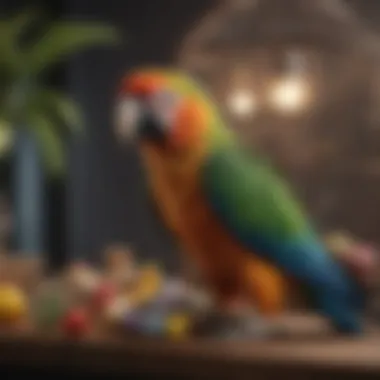
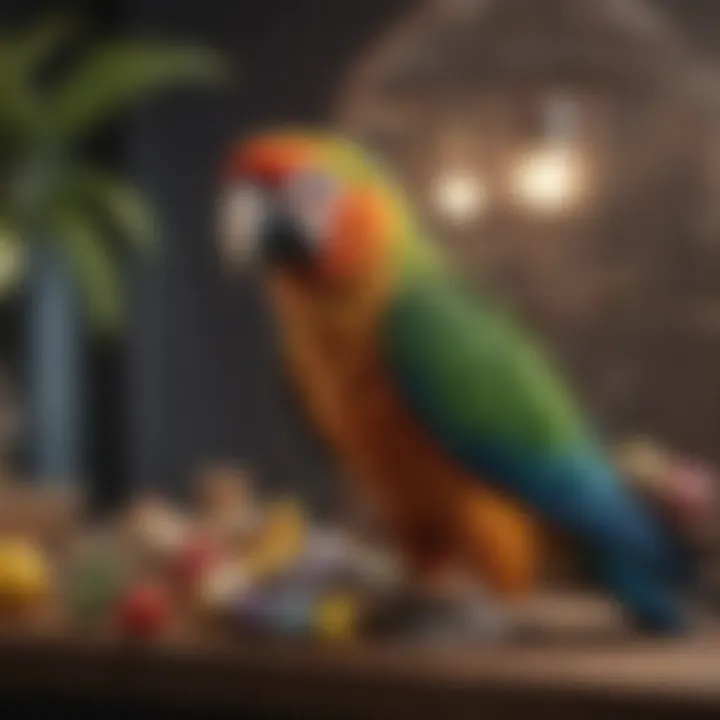
- Material: Opt for sturdy materials that resist simple destruction. Parrots are known for their strong beaks. Resources like untreated wood, food-grade plastics, and natural fibers are good options.
- Variety: Provide different types of toys, including puzzles, chewables, and foraging devices. This variety prevents boredom and encourages active engagement. Parrots enjoy toys that cascade through layers or those that can be dismantled.
- Safe Play Structures: Besides toys, create safe spaces for climbing and exploration. Seagrass mats, ropes, and perches encourage physical activity. Rotate toys frequently to keep interest alive.
Producing a stimulating environment is imperative. Birds require space to interact safely with toys.
Benefits
- Exercise: Active play keeps parrots fit and reduces stress generally.
- Mental Stimulation: Challenging toys enhance cognitive function.
- Behavior Management: Engaged birds are less likely to develop behavioral issues.
Interactive Games
Interactive games bring parrots and their owners together. Playing with your parrot can enhance your bond, providing a fun way to spend time.
- Training Games: Train your parrot using positive reinforcement techniques. Simple commands like 'step up' or 'wave' encourage interaction. Treats can work wonders as rewards for achieving specific goals.
- Puzzle Games: Introduce puzzles that require problem-solving. Hiding treats inside a container or a rollable toy challenges a parrot to think.
- Social Interaction: Include family members in playtime. Interactive play allows the bird to feel a part of the social dynamics in your home, which strengthens the bond.
Incorporating interactive games not only entertains but builds trust. This can lead to improved social behavior in the long term.
Regular engagement in enrichment activities vastly improves their happiness and overall quality of life.
Lastly, monitoring the response of your parrot to various activities is critical. This feedback guides you in fine-tuning activities that suit their unique preferences. Each parrot is an individual, so flexibility is key in enrichment planning.
Health and Wellness
Health is a crucial aspect of parrot ownership. Just as with any pet, a healthy parrot is likely to be a happy, engaging companion. Understanding the health and wellness of your bird means being aware of signs of good health, recognizing potential health issues, and taking steps to prevent illness.
Good health practices enhance the longevity and quality of life for parrots. Regular health checkups are essential. Birds can often hide their problems, making it difficult for owners to detect illness immediately. By being proactive, you can avoid serious ailments.
Regular Veterinary Care
Routine veterinary care is fundamental in maintaining your parrot’s overall health. Ideally, an avian veterinarian should be consulted at least once a year, or more frequently if your bird is older or has existing health conditions. Regular checkups allow for early detection of health issues, and thorough exam enables the vet to monitor your parrot’s weight, feathers, and beak condition.
During a visit, the vet will also aid in immunizations and checkpoints for common diseases. Keep track of any vaccinations due so that they are administered timely.
If your bird exhibits behavioral changes, like increased aggression or isolation, it may require an eluotation from the veterinarian. This agile practice could lead to securing a better outcome.
Signs of Illness
Recognizing the signs of illness in your parrot can make a significant difference in treatment outcomes. Birds normally mask discomfort, so it helps to observe them frequently. Here are critical signs to watch for:
- Changes in appetite: Eating less or refusing food entirely could indicate an underlying problem.
- Feather changes: Any sudden loss of feathers, or a change in feather quality, may signal that your bird is unwell.
- Behavioral shifts: Increased aggression, lethargy, or excessive vocalization may all provide clues to discomfort.
- Physical signs: An unnatural discharge from the nose or eyes, or difficulty breathing can suggest serious illness.
Regularily checking for these signs can allow for swift intervention, acting sooner can lead to raveling uncertainties.
Responding quickly to symptoms is vital. Early intervention can improve recovery outcomes and limit stress for the parrot. Stay educated on potential signs of aviary health issues to enhance your bird’s wellness.
Ethical Considerations in Parrot Ownership
Parrots are unique companions. Their complex needs demand careful attention by owners. Understanding ethics in parrot ownership can promote better relationships between humans and these intelligent birds. It involves making informed decisions that prioritize an individual parrot’s well-being, promoting long-term happiness and health.
Adoption vs.
Purchase
Adoption of parrots is often a matter of ethics. Many parrots in rescue centers await loving homes.
When adopting, potential owners should consider:
- The parrot's background, like previous treatment and exposure to different environments.
- Initial adjustment period that may involve stress and anxiety.
- Providing a stable environment that allows individual traits and habits to surface.
Purchasing a parrot can sometimes encourage unethical breeding practices. Many breeders prioritize profit over parrot welfare.
Here are some points to keep in mind:
- Choosing a reputable breeder is essential.
- Looking for certifications and proper health documentation helps.
- Verify whether birds are bred in a humane environment.
"Adopting a parrot not only saves a life but also sets an example to others about responsible behavior towards animals."
Understanding these aspects enables owners to avoid perpetuating unethical practices while also securing a good home for a bird in need.
Conservation and Breeding
The interaction between pet ownership and conservation carries weight. Owners influence parrot populations, both in domestic situations and in their natural habitats. Responsible ownership might include promoting conservation efforts.
In regard to conservation and breeding:
- Supporting ethical breeding practices ensures birds maintain natural traits and meet health standards.
- Participating in conservation can protect ruling parrot species from disappearing due to habitat destruction, climate change, or poaching.
Also, it is important to consider captive breeding programs:
- These programs can aid in nurturing species threatened by extinction.
- Backing them allows enthusiasts to contribute to restoration efforts.
Educating oneself about parrot habitats, conservation status, and ethical behavior pieces large into successful ownership. Parrots enrich our lives greatly, and through responsible ownership decisions, their future can be brightened in the wild or as companions.
End
In this final section, we reflect on the myriad components of parrot care and understanding that have been covered throughout the article. Parrots are complex creatures with intricate needs, making it imperative for potential owners or enthusiasts to comprehensively grasp their characteristics.
A thorough knowledge of anatomy and behavior aids in recognizing their psychological and physical requirements. These factors are crucial not only for ensuring the health of pet parrots but also for fostering a strong bond between the caregiver and the bird. Key elements such as nutrition and enrichment activities will ensure that these birds thrive both in mind and body.
A deep understanding of parrots significantly enhances their quality of life.
Furthermore, ethical considerations underscore the importance of promoting responsible ownership. Choosing to adopt rather than purchase diminishes the negative impacts on wild populations. Through awareness of species diversity, enthusiasts can appreciate what each bird brings to their lives, and make informed decisions.
By consistently reevaluating their care requirements and considering sustainability, parrot owners can become advocates for their ailed companion’s well-being. This article serves not only as a guide but as a call to action, prompting engaged and responsible ownership.
As you embark on this journey with your parrot, the lessons and insights within this guide are paramount. Continuously seek knowledge, remain adaptable, and always be proactive for the betterment of your feathered friend. In this way, enriching both your lives becomes an attainable goal.















